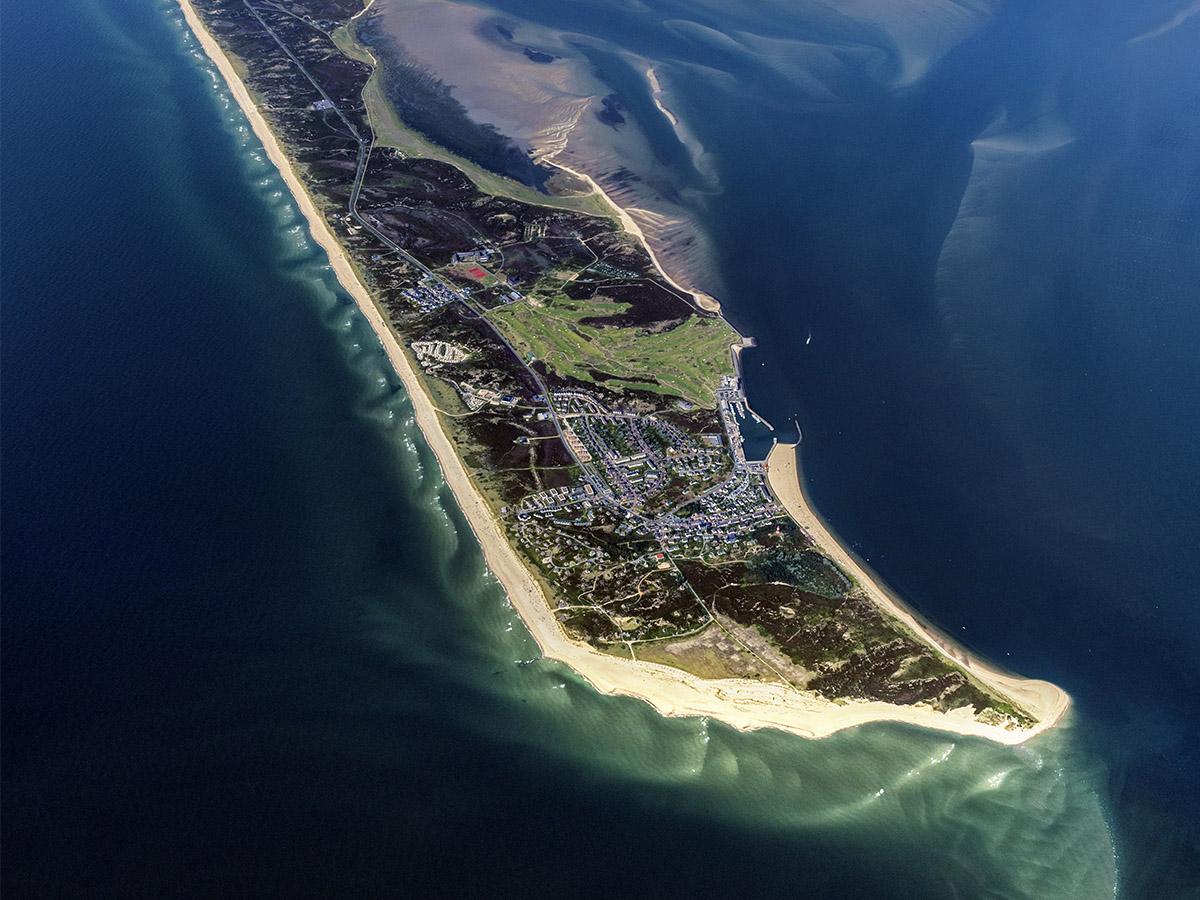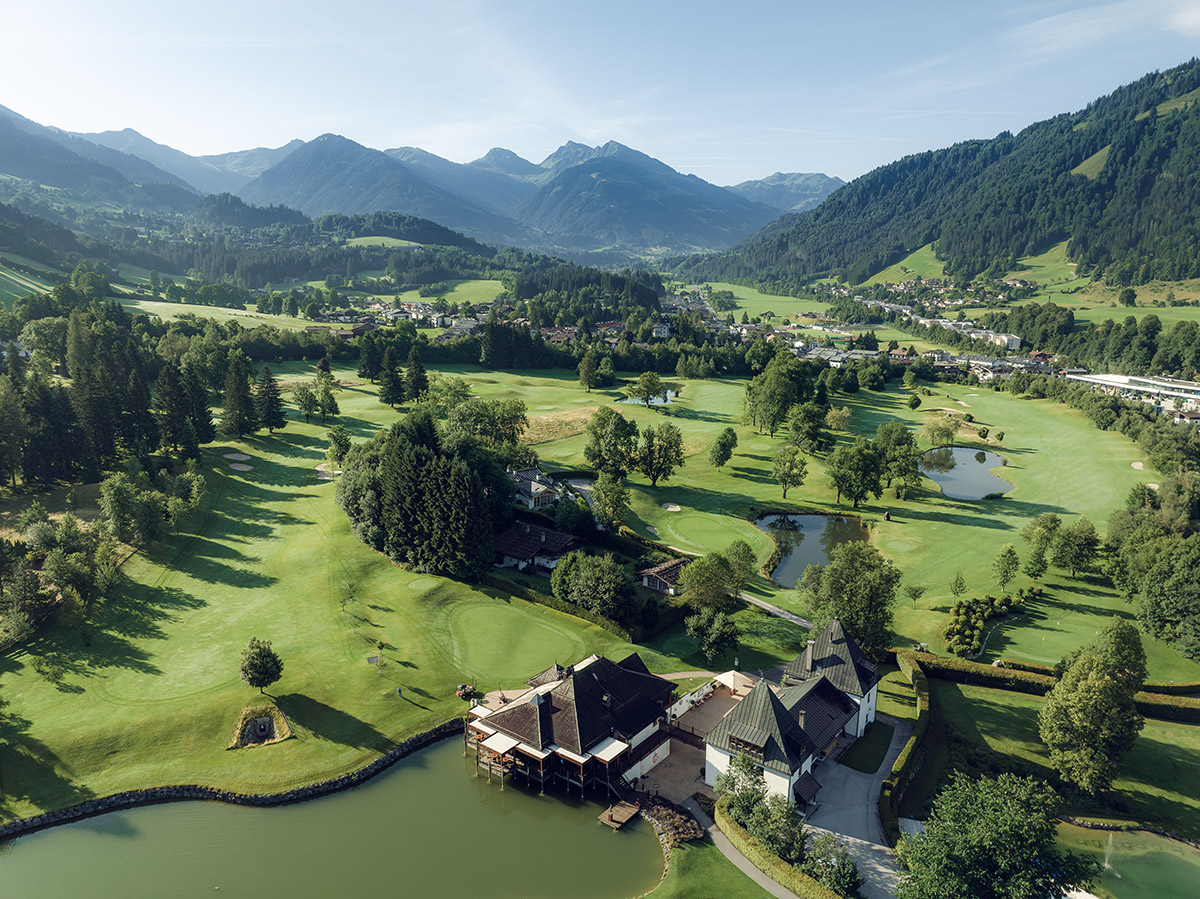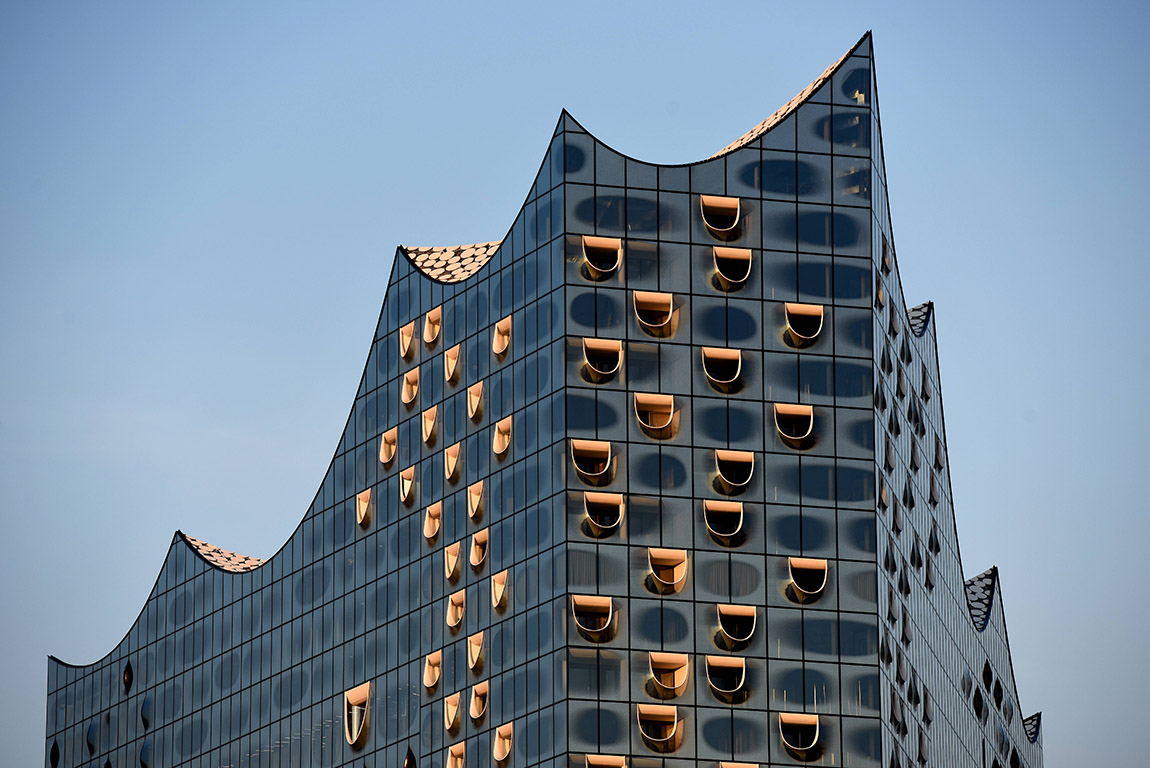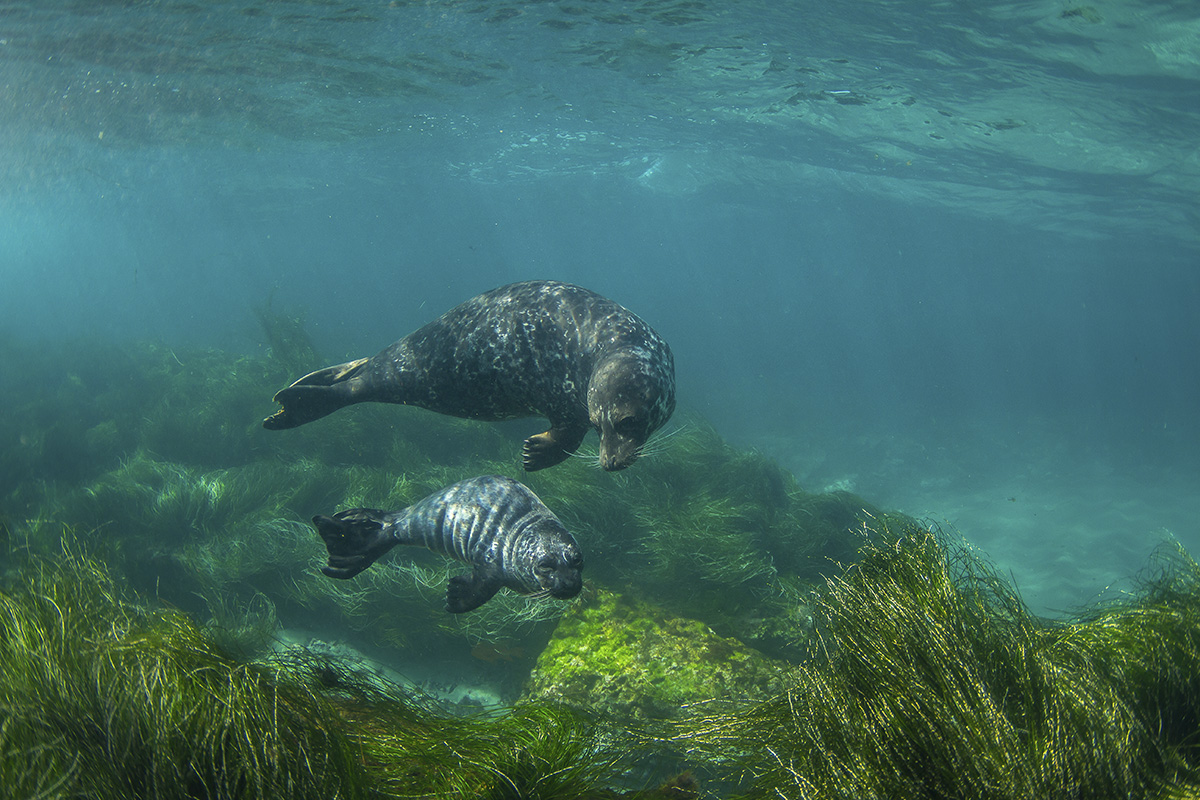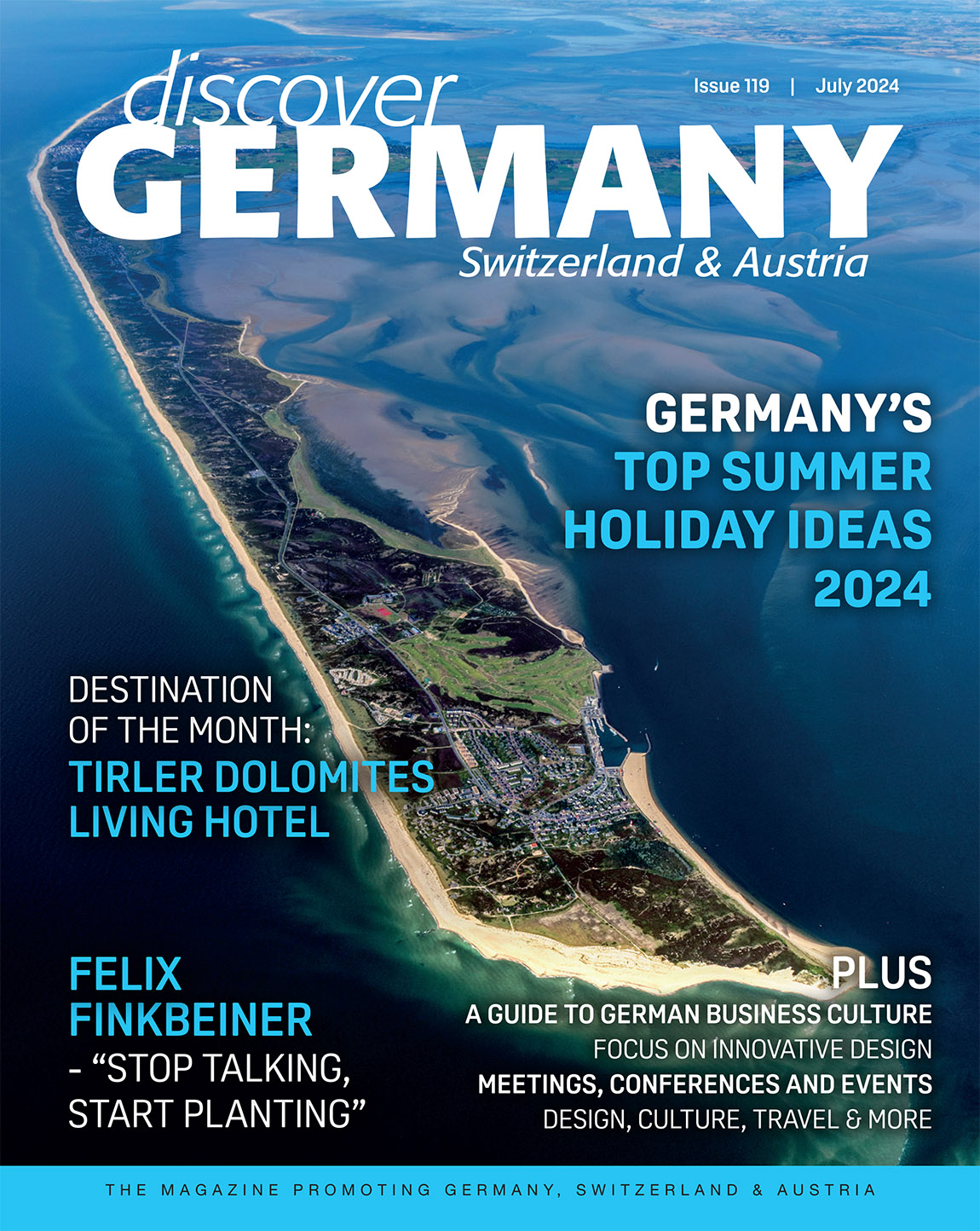Top 3 Islands In Germany
TEXT: NANE STEINHOFF
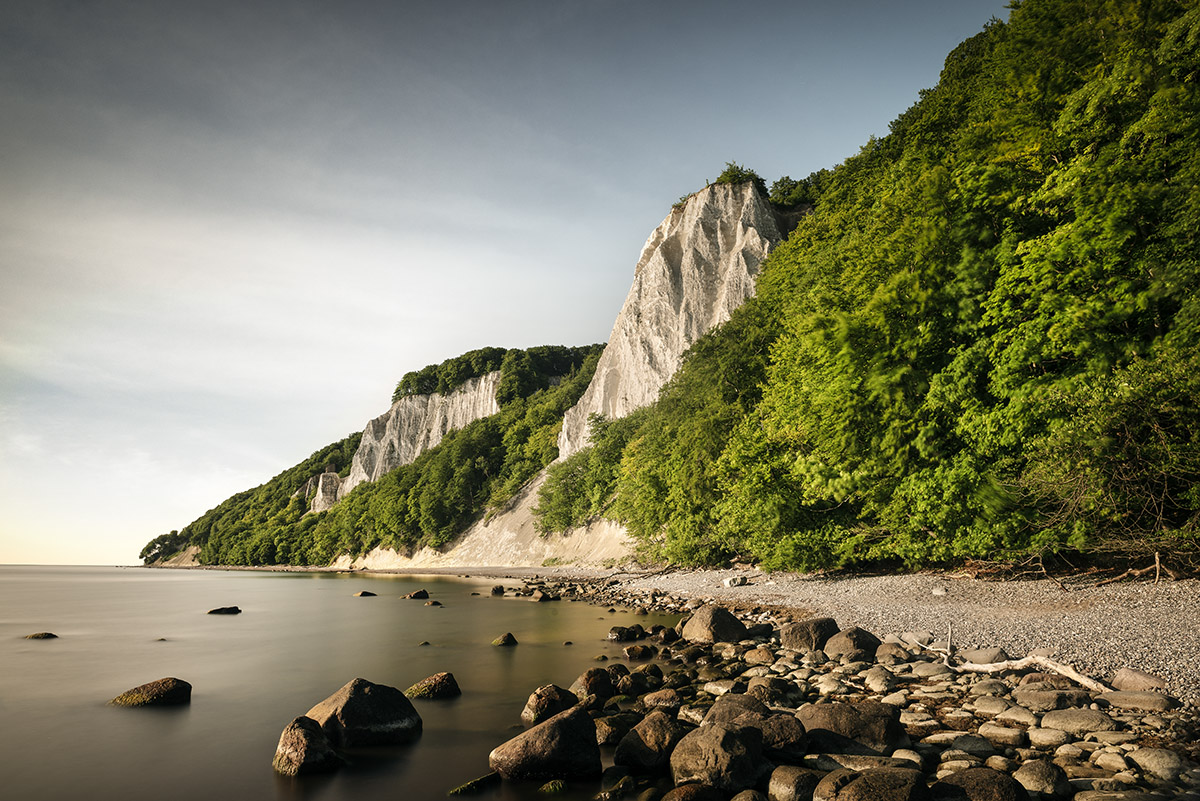
Rügen. Photo: Lookphotos, Günther Bayerl via GNTB
Germany might be best known for lush forests, impressive mountain sceneries, and vibrant city centres. But did you know that the country also features some outstanding island escapes? We introduce our top three picks for your next holiday.
It is true, you will not often see temperatures soaring into the 30s, but who needs that much of a tan when you have such beautiful scenery to explore? German tourism has been steadily growing for each of the last eight years, with tourists not only keen to see the main cities such as Berlin and Munich, but also to drink in the serenity and beauty of its beaches. From the vibrant North Sea island of Sylt, to the quaint fishing village of Rügen, we have got the best of German beaches covered.

Borkum. Photo: Nordseeheilbad Borkum GmbHNBG, Andreas Behr
The Queen of the North Sea
Located within the UNESCO World Heritage Site of the Wadden Sea, Germany’s North Sea islands have it all. Sylt, often referred to as the ‘Queen of the North Sea’, has a burgeoning reputation as a top summer tourist destination due to the fact it has something for everyone. If its great nightlife and water sports are not for you, the island’s west coast boasts 40 kilometres of picture-perfect beaches accompanied by its famous ‘Rotes Kliff’ (Red Cliff) where you could easily lose a week with a good book and a few bottles of red.
Sylt stands out. Not only as an island from the floods of the North Sea. Also because the landscapes of an entire continent can be experienced here on just 99 square kilometers: Imposing steep coasts, majestic cliffs, shifting dunes, amphibious mud flats, salty meadows, blooming heather, dreamlike beaches and roaring sea. Everything is there and ready to be discovered. Plus twelve places, all with very different charms.

Seals on Borkum. Photo: Nordseeheilbad Borkum GmbHNBG, Andreas Behr
Nature and environmental protection have long been a top priority here, more than half of the island is under a special protectorate. The Wadden Sea off Sylt is even part of the UNESCO World Natural Heritage and is therefore officially one of the most important natural monuments in the world. The climate is not stingy with its charms either: in the breezes that the North Sea wind blows on land, the minerals and trace elements of the seawater, finely atomized by the surf, float. Almost forty kilometers of sandy beach border the western coast. Plenty of opportunity for a long hike or for a bold jump into the refreshing surf.
Nature is the greatest asset on the island of Sylt. Protecting them is one of the most important tasks. Exactly 100 years ago, the Listland and the Morsum Cliff were the first areas in Schleswig-Holstein to be placed under nature protection. A wise and far-reaching decision that has lost none of its importance to this day. The first two Sylt nature reserves have been followed by nine more to date. With an area of almost 18 square kilometers, the North Sylt nature reserve between Kampen and the northern tip of Sylt is the largest refuge on the island, while the Kampener Vogelkoje, the smallest protected area, measures less than half a square kilometer. A total of a good 36 square kilometers of Sylt – which corresponds to 37 percent of the island’s area – are now under nature protection. This includes in particular the dunes, the heath and the cliffs. In addition, there are the landscape protection areas, which cover around ten percent of the island’s surface. For everyone who would like to get to know the Sylt landscape and its flora and fauna: The Sylt nature centers offer information events, exhibitions and natural history excursions all year round.
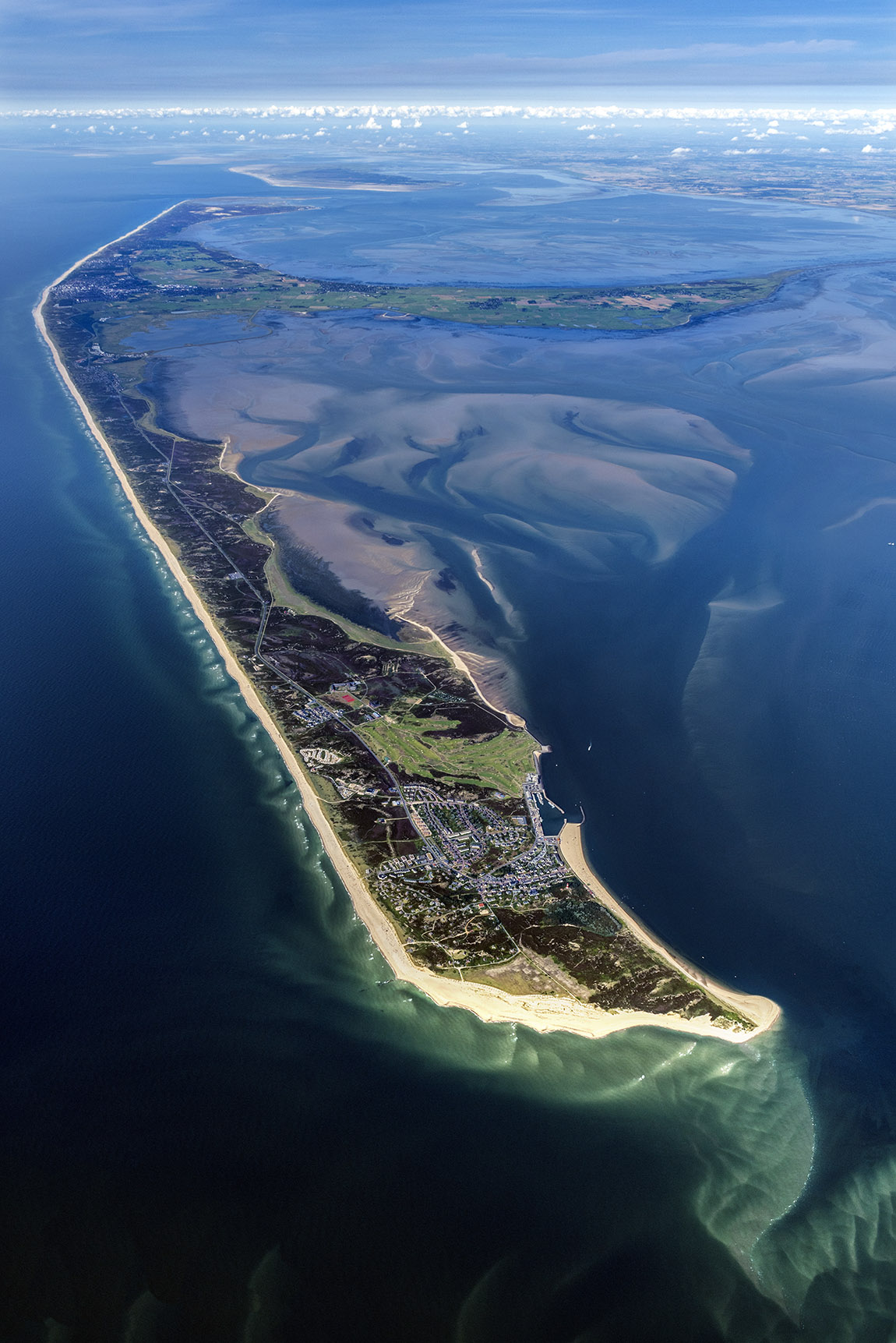
Sylt. Photo: © Sylt Marketing l Martin Elsen
Sylt not only keeps you fit. Sylt also puts you in a good mood. Because exercise in the midst of nature on Sylt releases plenty of happiness hormones. Surfers, kiters and sailors glide over the waves on the east and west coasts. Others prefer solid ground under their feet and give in to their urge to move on the beach. Cyclists and hikers can choose from a 220-kilometre route network and golfers can tee off on four golf courses. For those who prefer to just watch: Top sporting events offer entertainment at an international level all year round.
On Sylt you should definitely listen to your gut feeling, because the island shines as a culinary stronghold. More than 200 restaurants, from the casual beach bistro to the gourmet restaurant, look forward to spoiling their guests in summer and winter alike. It’s not just the many award-winning restaurants that attract connoisseurs from near and far. The products from the local sea and vegetable gardens have long been on everyone’s lips even beyond the island’s borders and shape the natural image of the island.
Even away from the sun, sand and beach chair, the island offers an extremely varied and demanding program with which it manages the balancing act between creative tradition and contemporary cultural projects in a relaxed and relaxed manner. For years, series of events such as the Kampen Literature Summer or the sea cabaret with selected concerts and readings have enriched the cultural spectrum of the island. In short: Sylt makes you addicted.
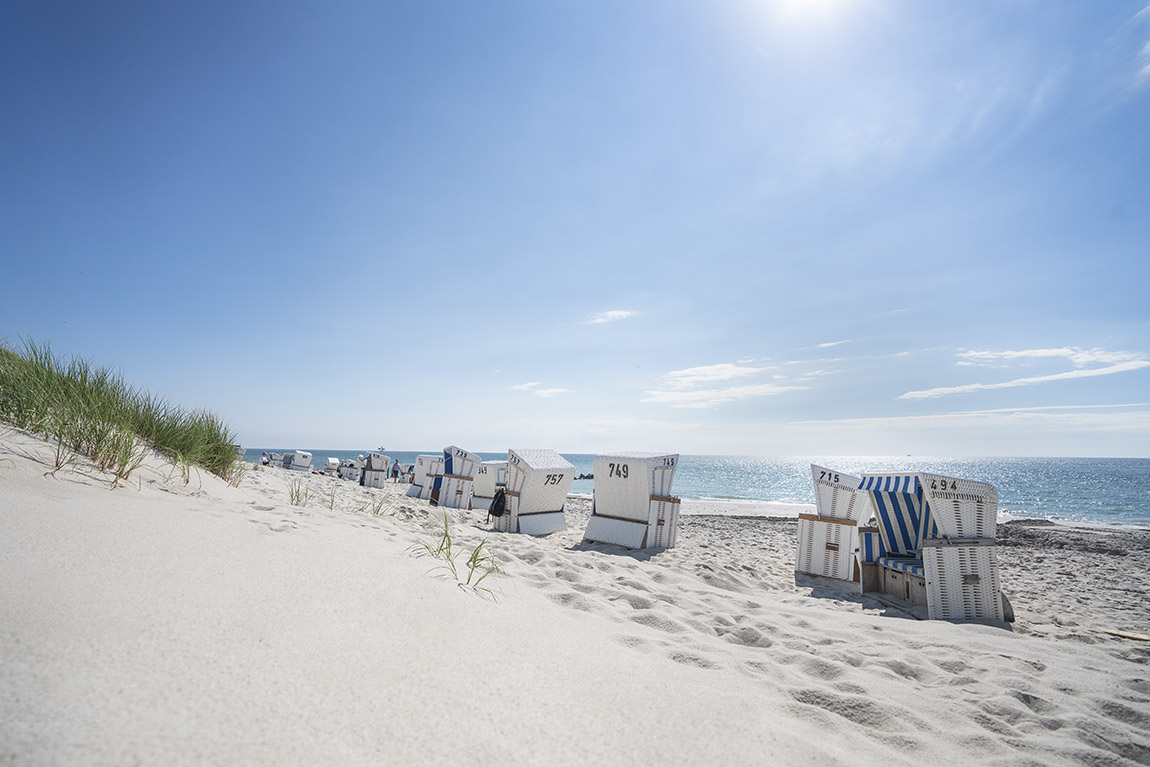
Sylt. Photo: © Sylt Marketing l Philip Ruopp
An island of rich nature
The large Baltic Sea island of Rügen is the most popular beach destination in Germany, and with good reason. This island is covered with luxurious resorts, quaint fishing villages, stunning national parks and 60 kilometres of white sand beaches. The white cliffs and rolling hills mean it is quite easy to get carried away by the natural beauty of Rügen, and one could easily spend a fortnight exploring every nook and cranny. The island is home to leafy towns such as Binz and Sellin, whose picturesque promenades and piers add to Rügen’s charm. Another quirk of the island is the old narrow-gauge railway line that takes tourists between beaches in the southeast — ‘Raging Roland’, much-loved steam-powered locomotives.
Rügen is also the perfect island to experience nature to the fullest. On the Jasmund peninsula, the green roof of the beech forest offers protection against the rain. In the Putbus Palace Park, it’s the trunk of one of the old oak trees that protects us when it’s windy. The fact that nature needs our protection as well was realized by Hans Dieter Knapp from Rügen at a young age. Thus, he began to stand up for the protection of the island’s nature. In 1990, he played a key role in placing the national parks in Jasmund and in the Western Pomerania Lagoon Area as well as the Southeast Rügen Biosphere Reserve under protection. In 2020, the national park programme celebrated its 30th anniversary.
Today, the Southeast Rügen Biosphere Reserve is one of the three areas that were officially placed under protection in 1990 as part of the national park programme to protect unique landscapes. The area was shaped by ice-age glaciers. It is characterized by idyllic Bodden-type lagoons, rough cliffs and fine sandy beaches as well as by beech forests, grasslands and undulating reed belts. Man has also left his mark in this region over the past 5,000 years: Slavic place names, traces of Cistercian monks, romantic village churches and magnificent classicist buildings bear witness to this. It is a unique natural and cultural landscape in a very small area, and the aim is to achieve a harmonious relationship between economic activity and the protection of natural resources.
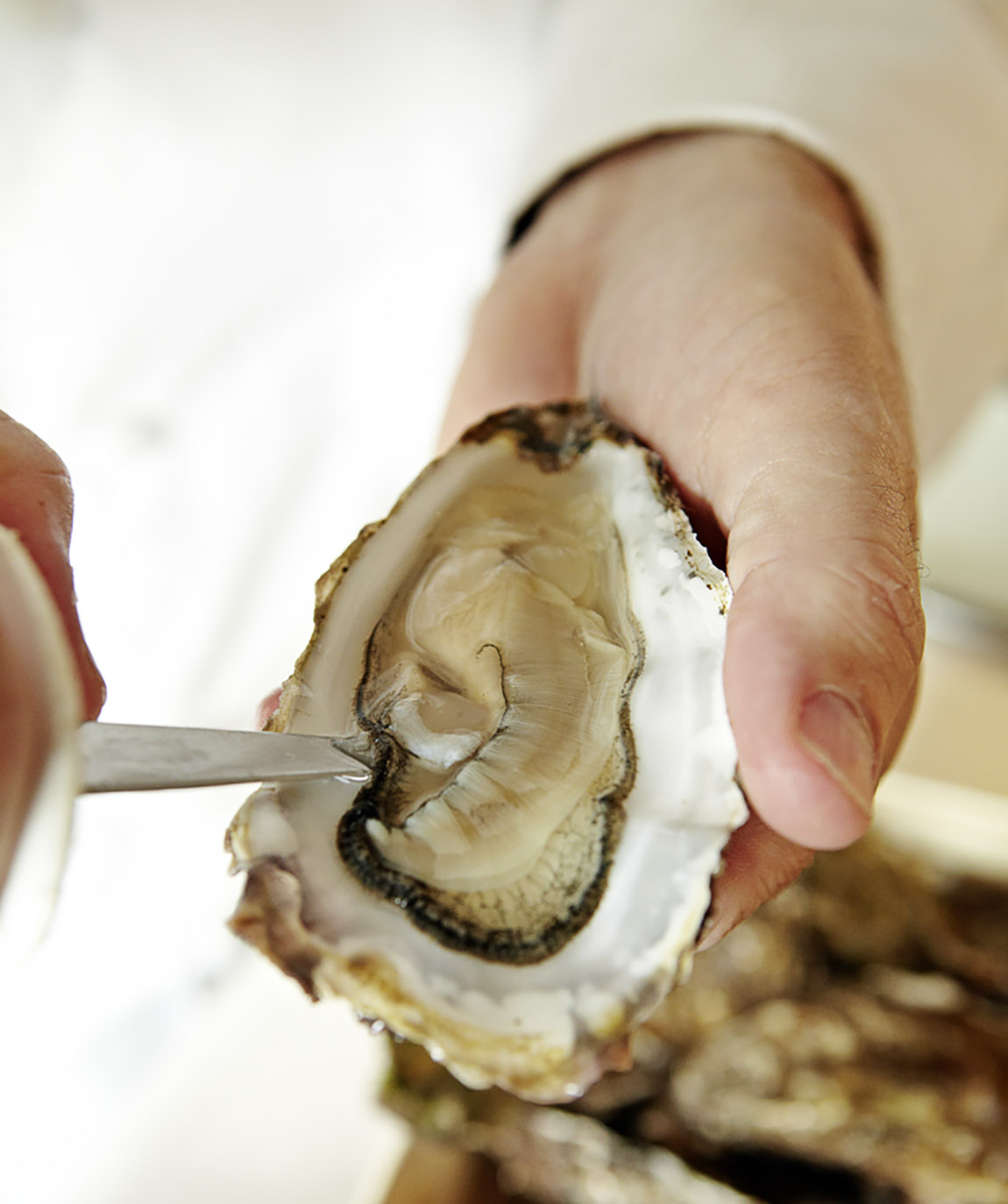
Oysters on Sylt. Photo: © Sylt Marketing l Christian Kerber
This is in contrast to the Jasmund National Park, Germany’s smallest national park, where the highest point of the island meets the Königsstuhl chalk cliff, dense beech forests as well as swamps and meadows. Here, the goal is to let nature develop largely undisturbed, offering shelter to rare plants and animals such as the kingfisher, the sea eagle, the red-breasted flycatcher or the fire-bellied toad. It is a natural paradise – one that attracts many locals and guests, who discover the reserve on footpaths that guide them along the cliffs and through the beech forests.
On the other side of the island is the Western Pomerania Lagoon Area National Park – a refuge for many animal species. Even otters and porpoises are sighted here from time to time. However, the national park is especially famous for the large number of cranes, which rest here every year between September and November. The natural spectacle has become a visitor magnet which can be followed from special observation points so as not to disturb the animals too much.
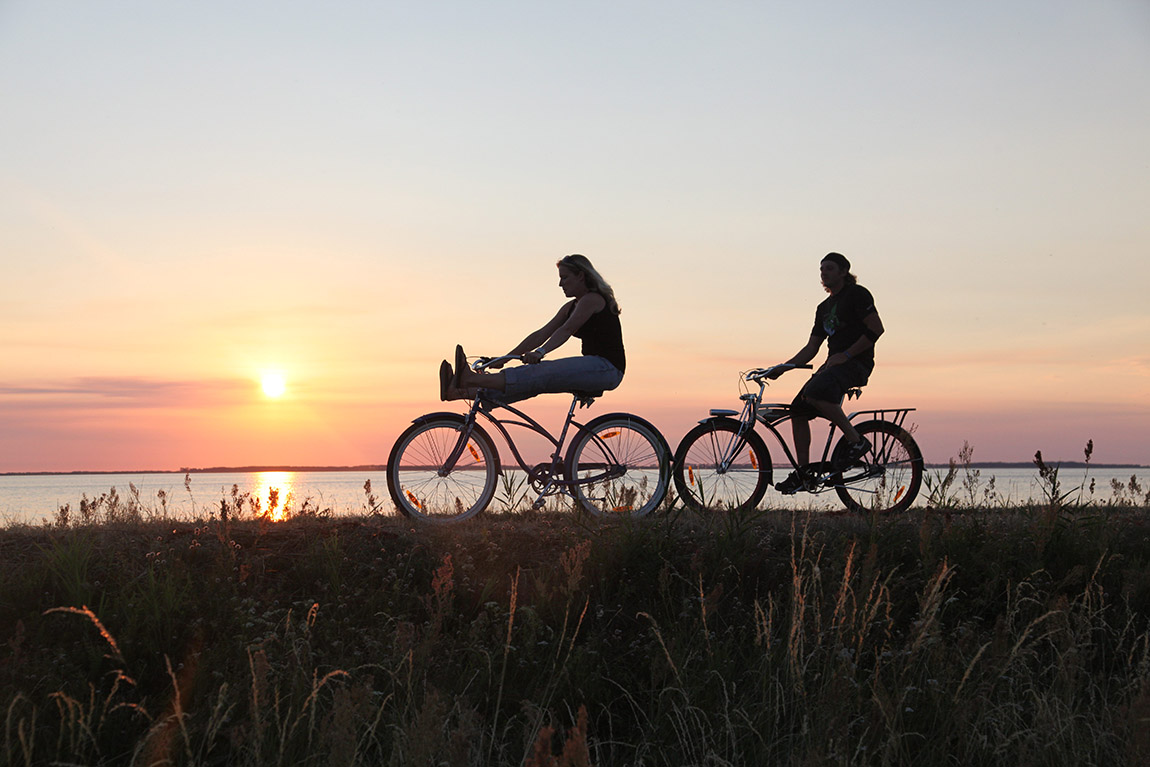
Rügen. Photo: Tourismuszentrale Rügen GmbH via GNTB
Explore the Wadden Sea
Borkum is the largest of the East Frisian Islands and, with around 2.5 million overnight stays, is one of the most popular holiday destinations in Germany. In the middle of the UNESCO World Heritage Wadden Sea and as the only one of the East Frisian Islands about 30 km from the mainland, the island impresses with its unique high sea climate, a diverse flora and fauna as well as a varied leisure and wellness offer for young and old. Borkum is particularly characterized by this the four worlds of discovery: nature, vitality, culture and sport, which are flagships and trump cards at the same time.

Borkum. Photo: Elseneuroluftbild.de, Martin Elsen
The island, affectionately also referred to as the most beautiful pile of sand in the world, is located in the middle of the Lower Saxony Wadden Sea National Park and has a diverse natural landscape that can be explored on around 130 kilometers of developed cycling and hiking trails or during long walks along the water’s edge. Whether it’s the miles of sandy beaches, the Greune Stee wetland, the Tüskendörsee, the seal bank, the Ostland or the extensive dune landscape in the direction of the Hoge Hörn – guests have numerous opportunities to experience the diverse nature up close. Most recently, the ‘Loopdeelenweg Ronde Plate Dünenkamm’ was inaugurated in 2020, which makes it possible to circle the island at around 21 kilometers and experience all facets of Borkum’s nature. A special experience is also a mudflat hike through the UNESCO World Heritage Wadden Sea, which is home to around 10,000 different species of creatures and is considered the nursery of the North Sea.
Borkum’s island location not only guarantees distance from everyday life, but also low-pollen and aerosol-rich air, which has a positive effect on the respiratory tract, skin and cardiovascular system – and makes every second of your stay on the island a pleasure for body, mind and soul. Every walk on the beach or in the dunes lets the visitor take a deep breath and leave all stress behind. For many decades, Borkum has therefore been one of the leading health destinations on the German North Sea coast, which is also certified as a Thalasso spa and the first allergy-friendly island in Europe. In addition, there is a wide range of wellness offers for visitors, including mud packs, seawater baths, Thalasso relaxation programs and different types of saunas.
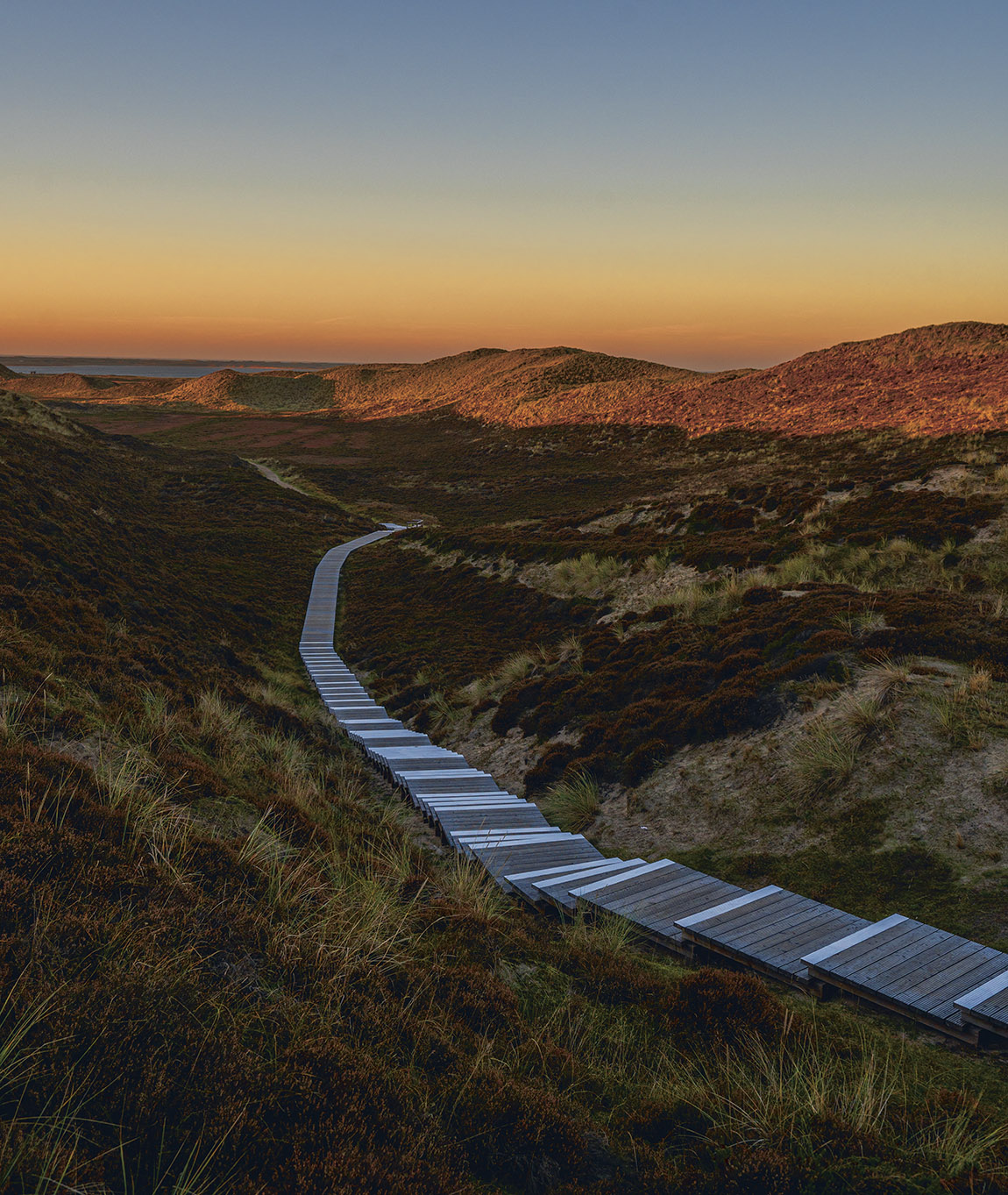
Sylt. Photo: © Sabine Braun l Sylt Marketing
For more information about Sylt:
www.sylt.de
Learn more about Rügen:
www.ruegen.de
See what’s happening on Borkum:
www.borkum.de
Subscribe to Our Newsletter
Receive our monthly newsletter by email
